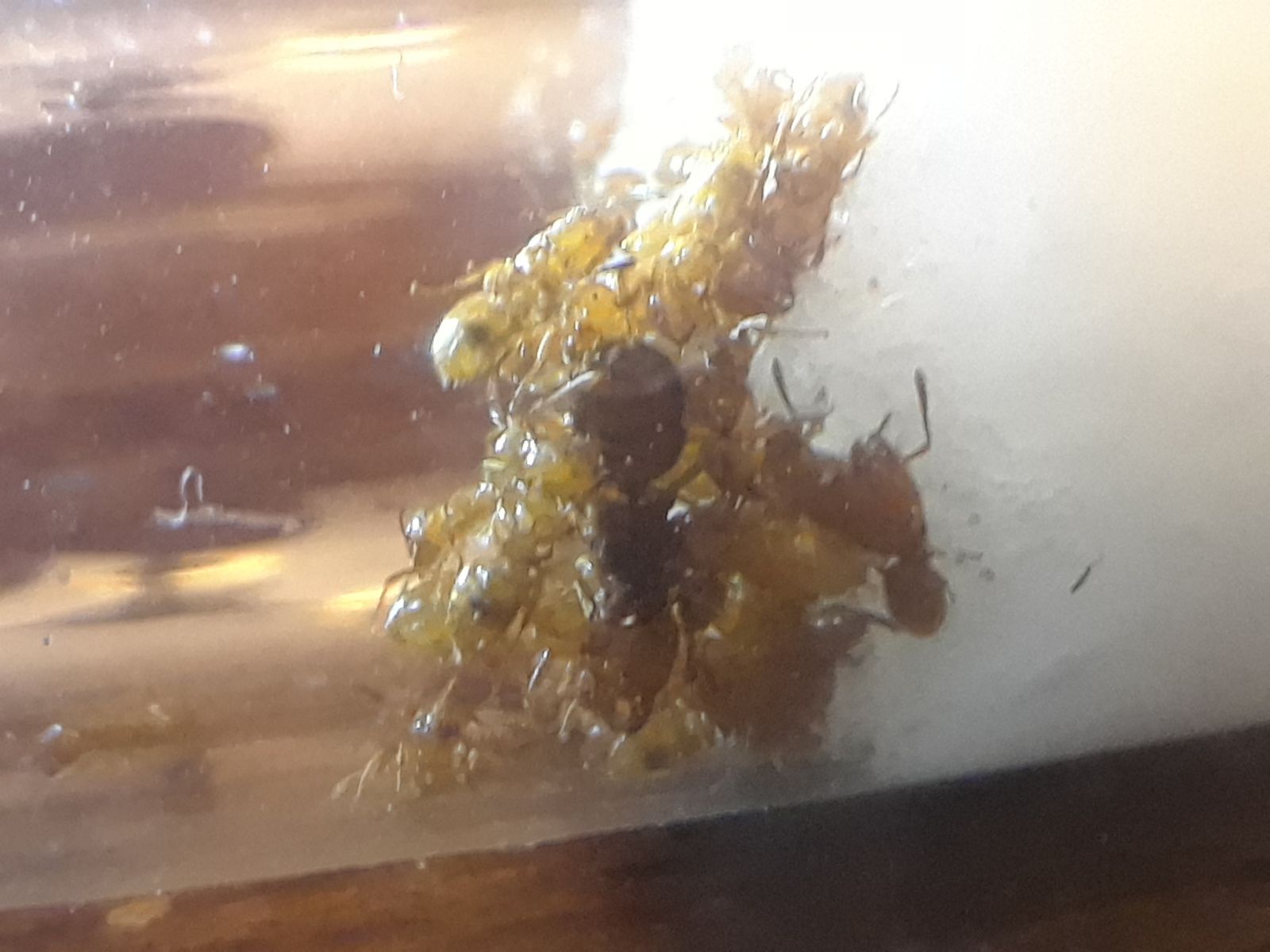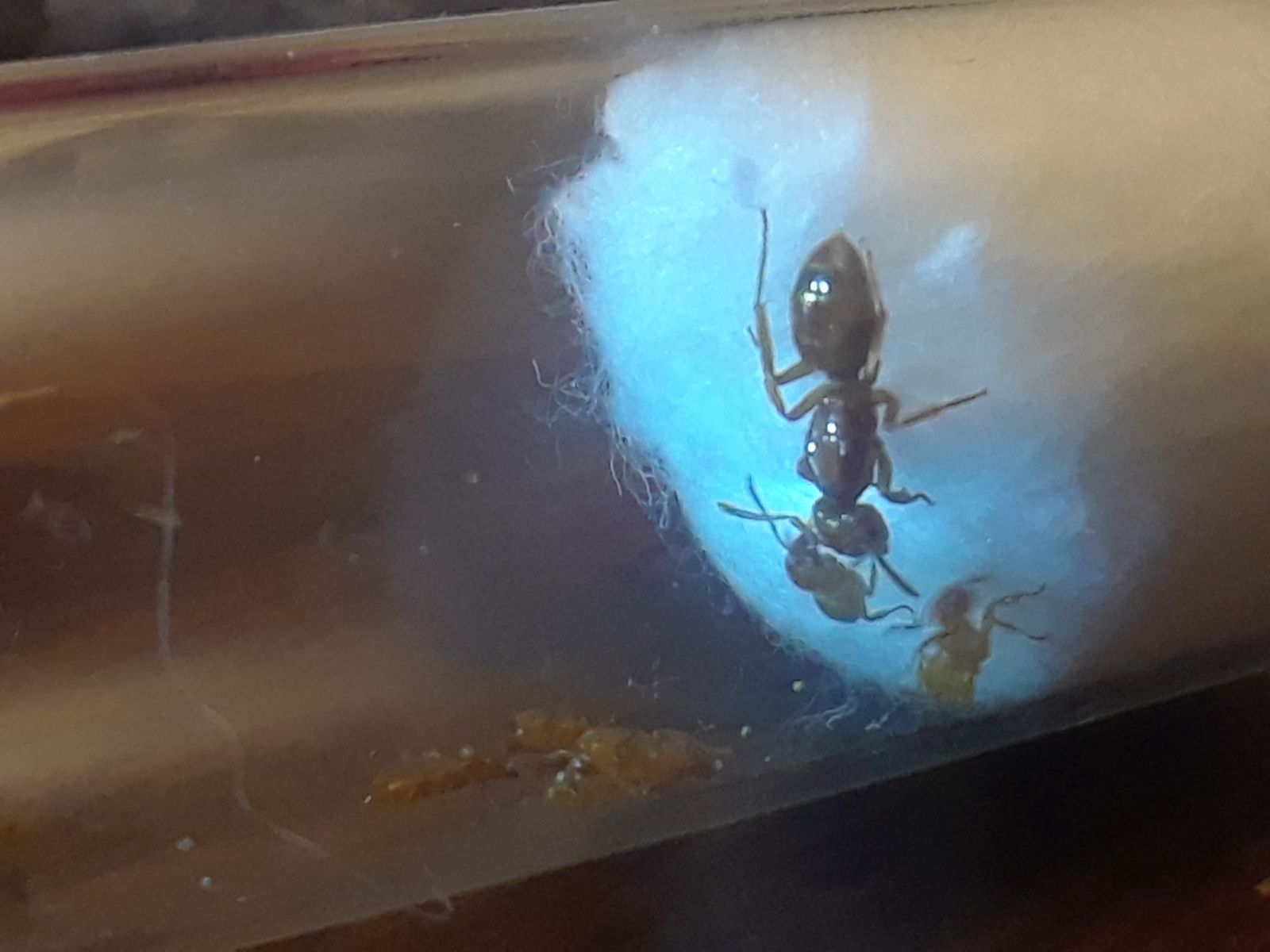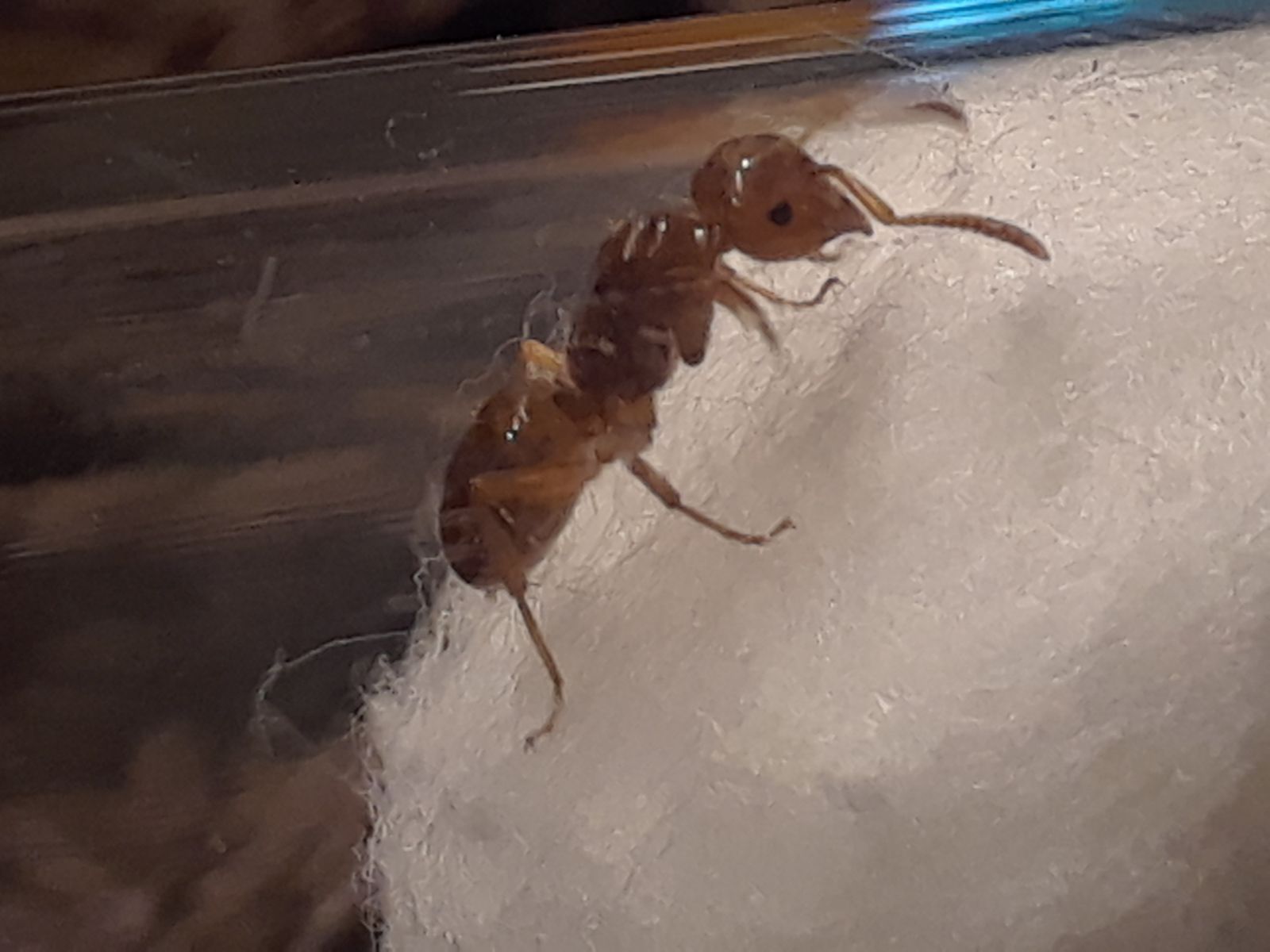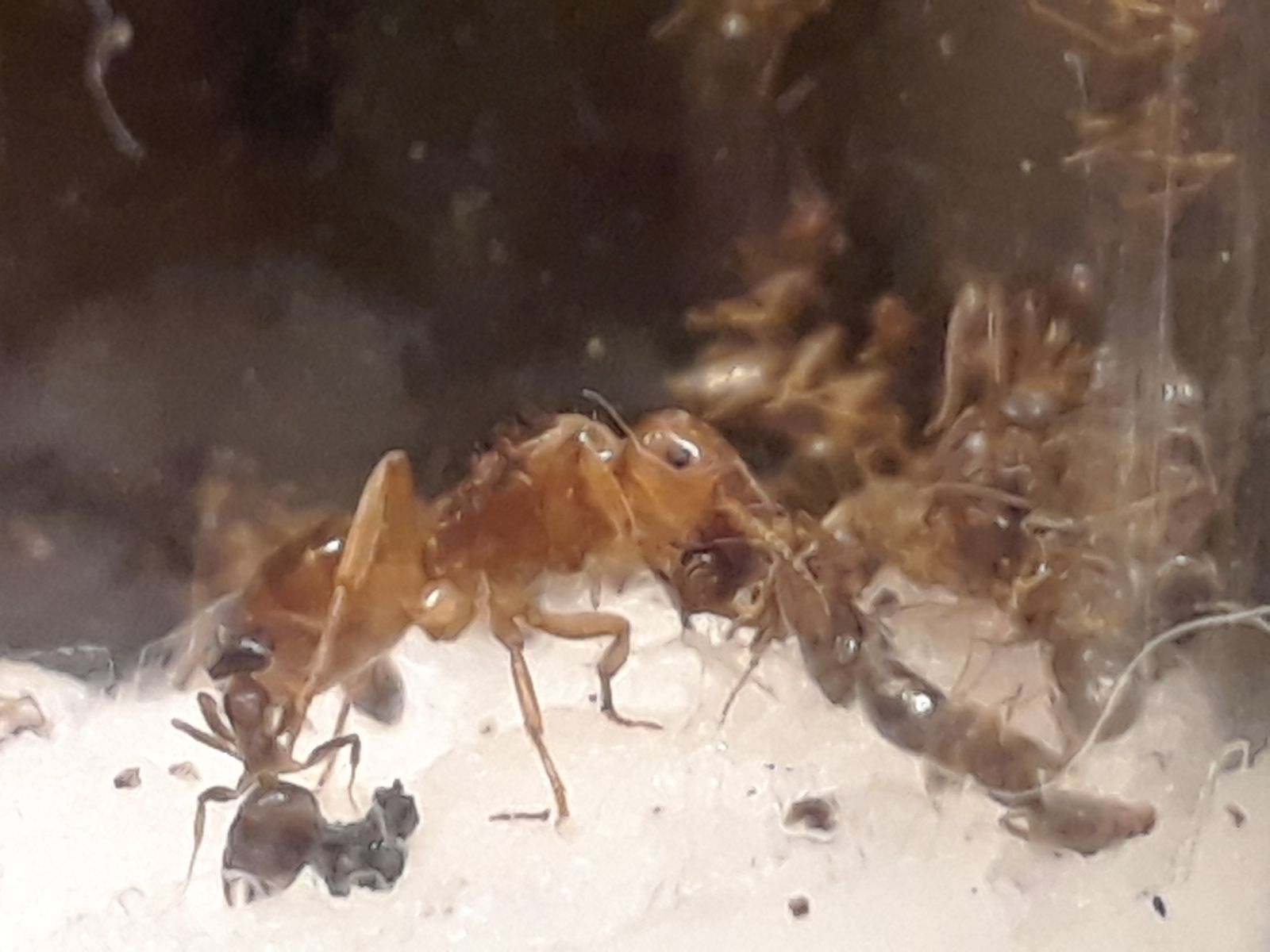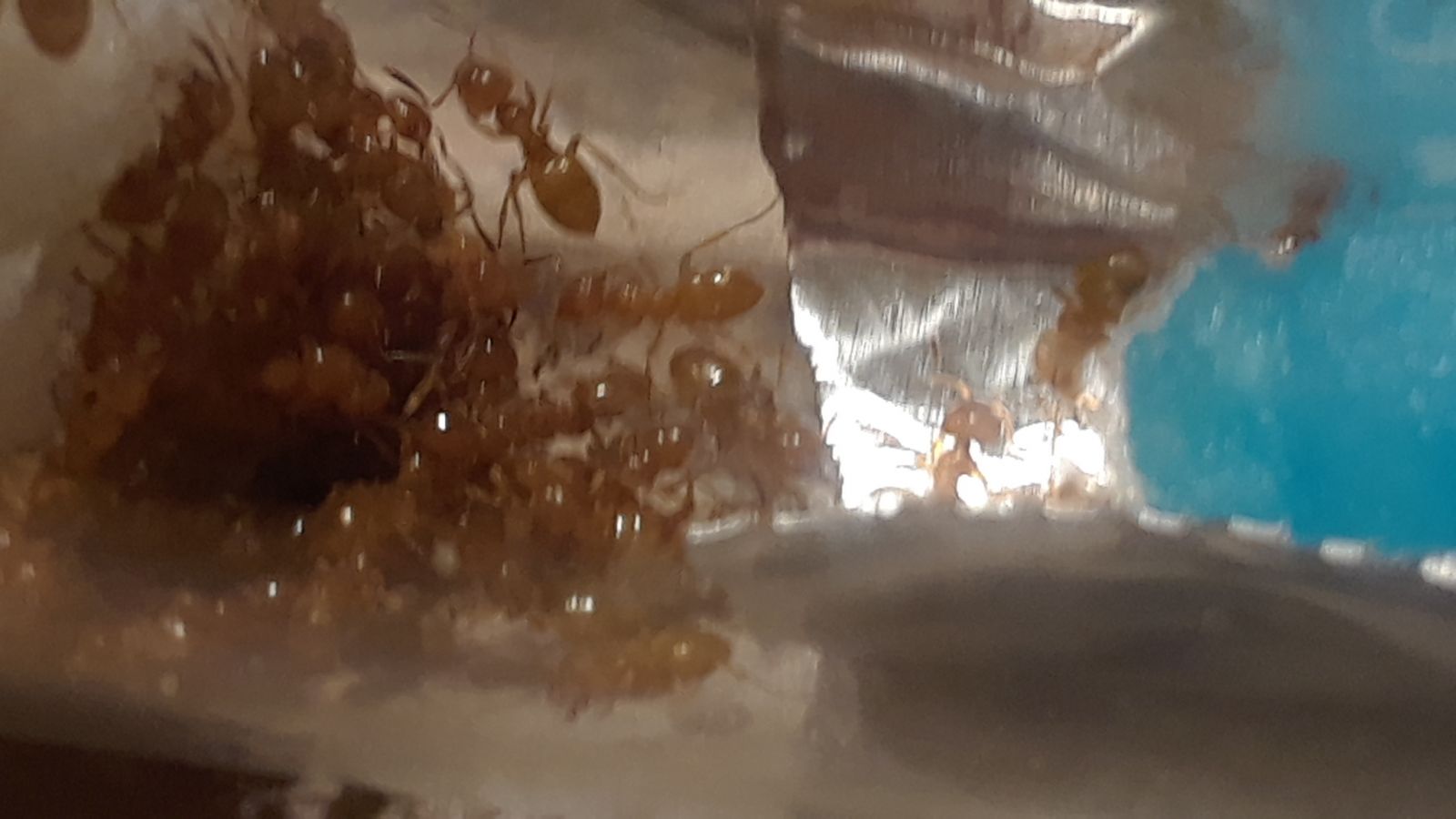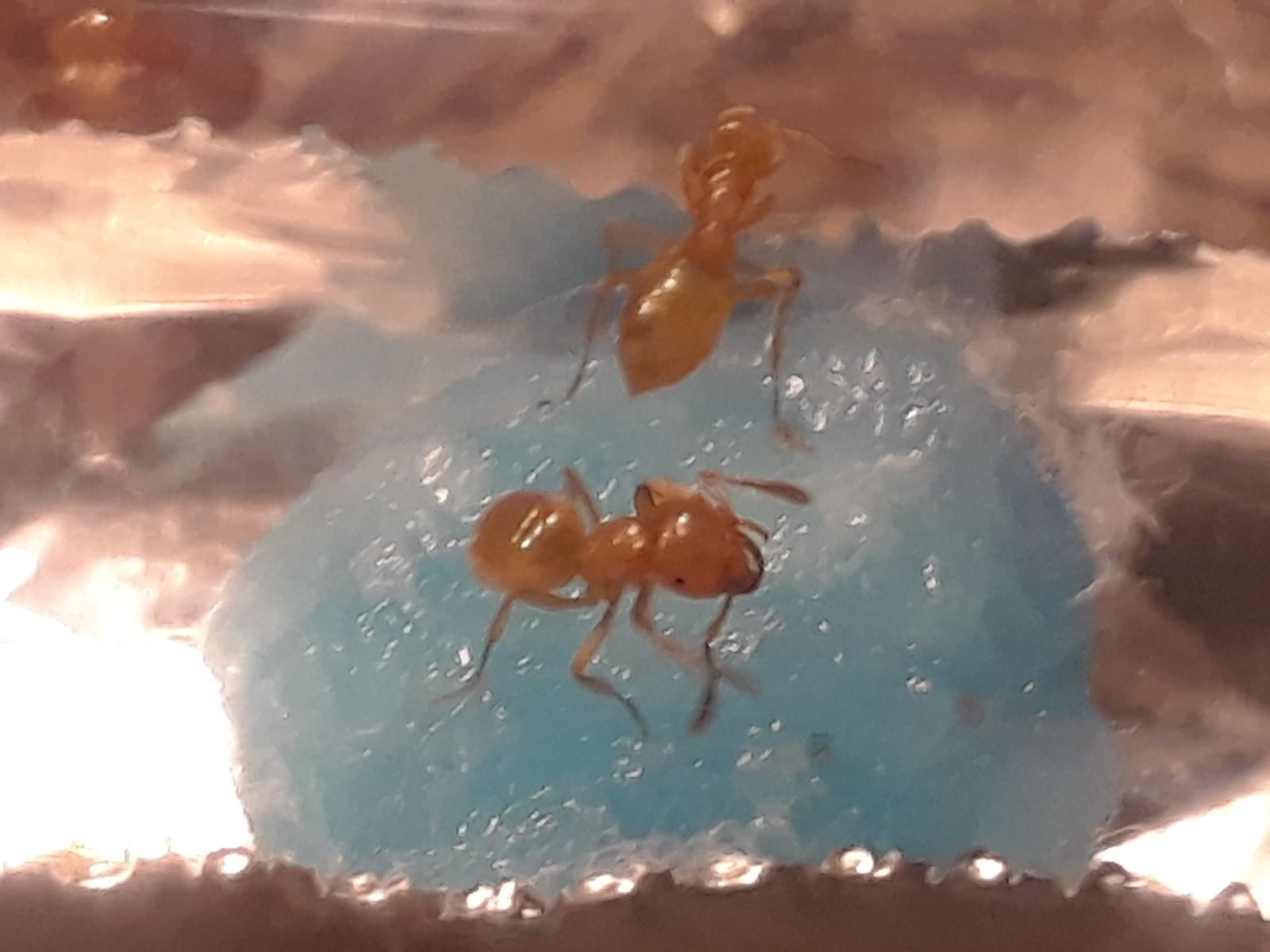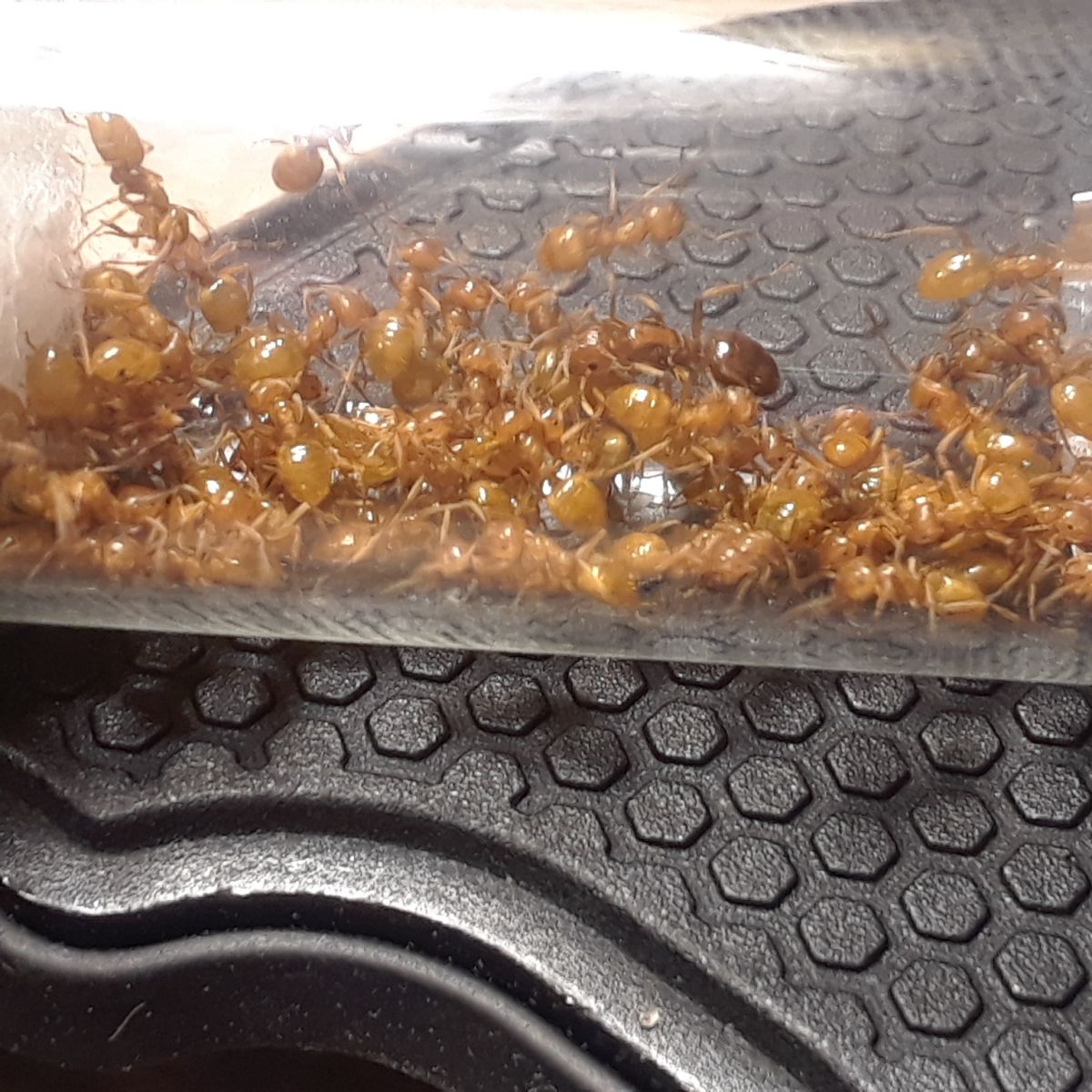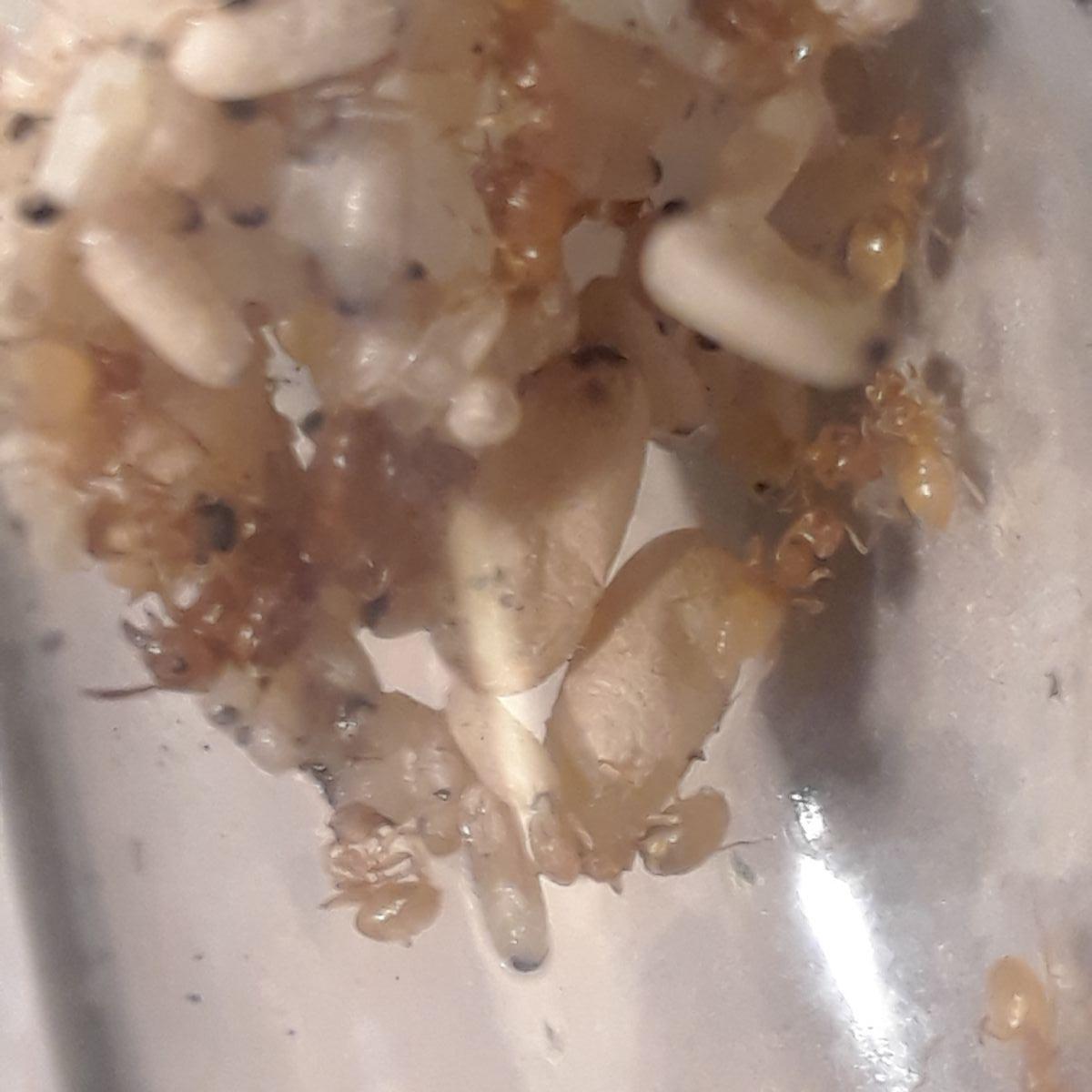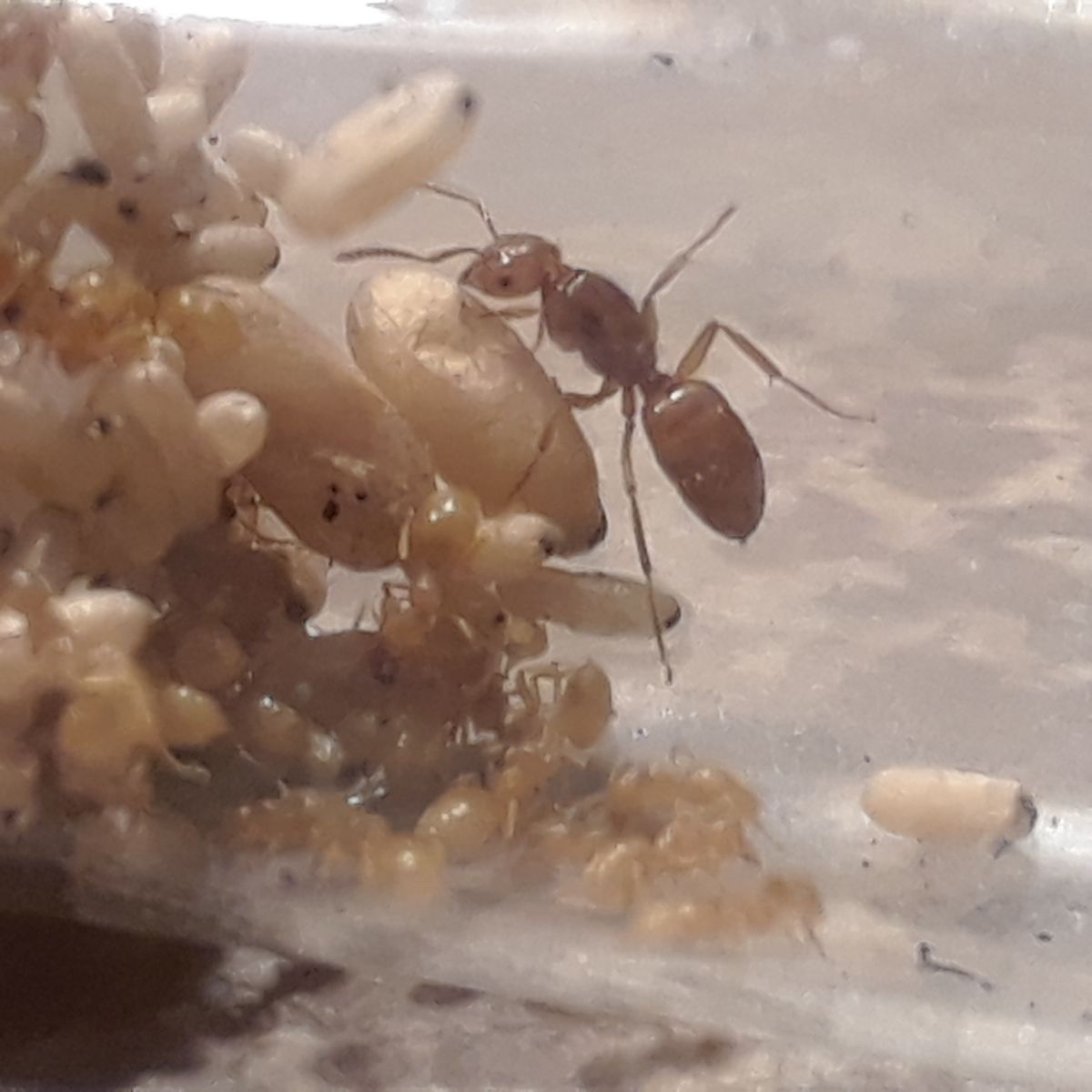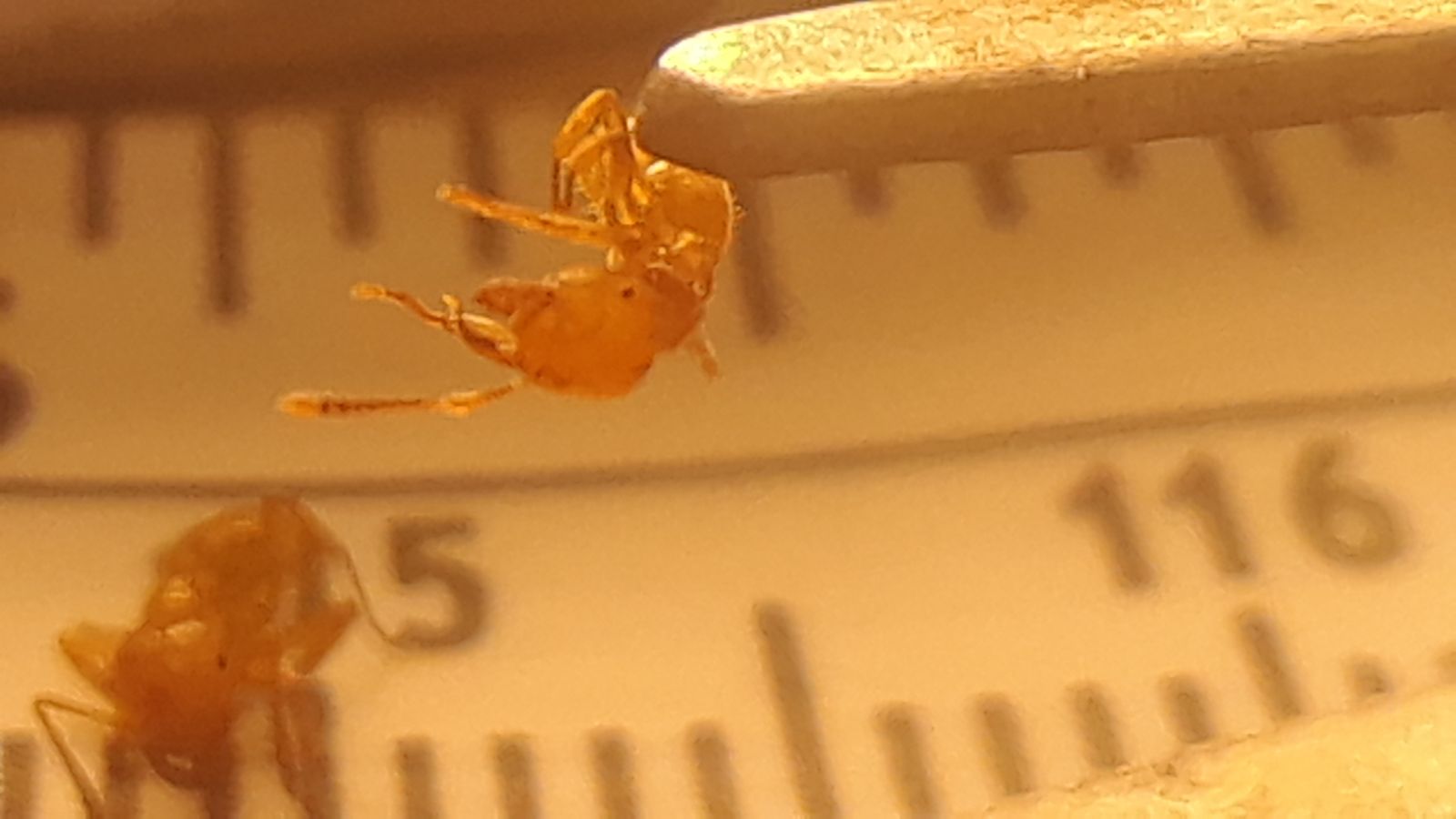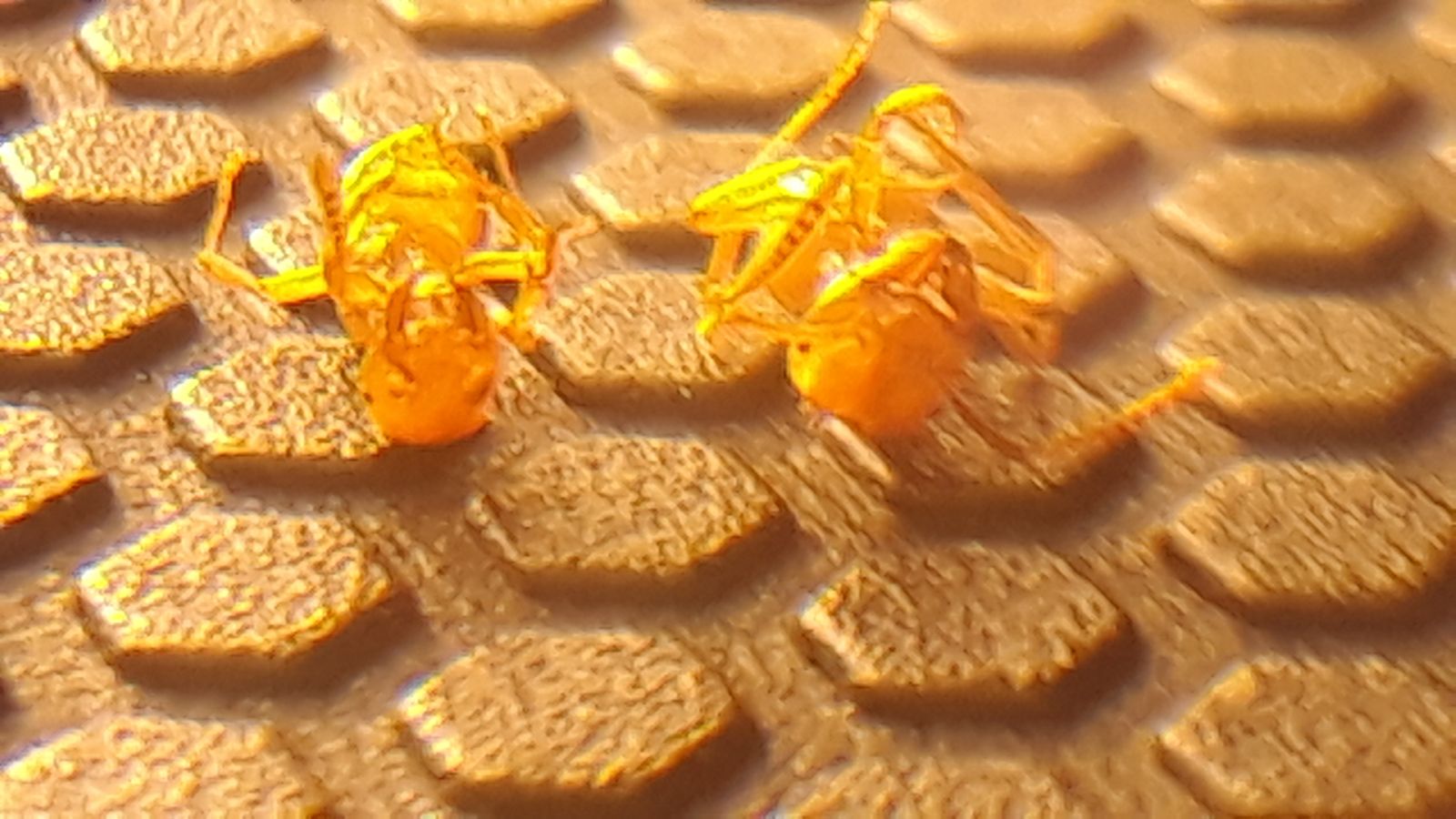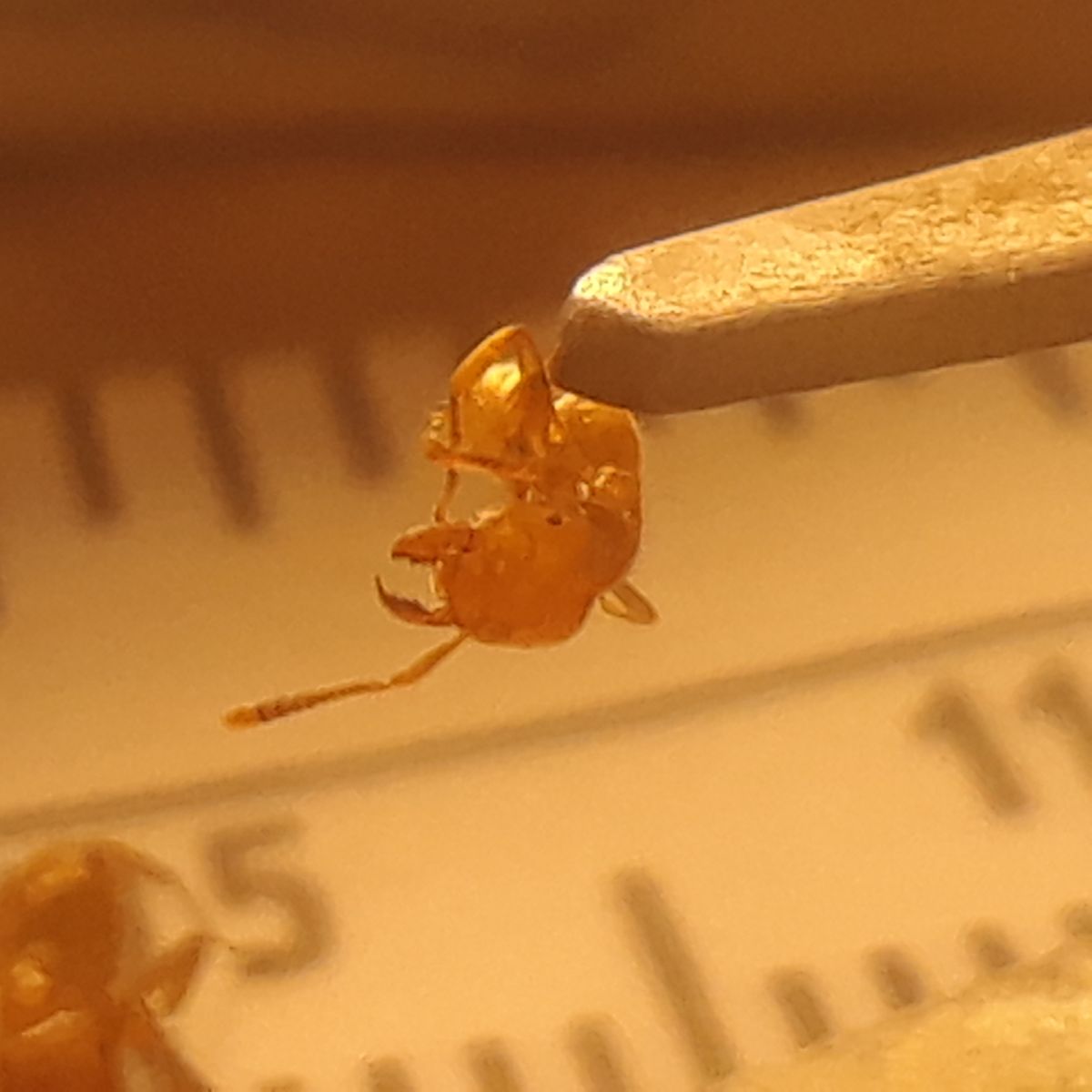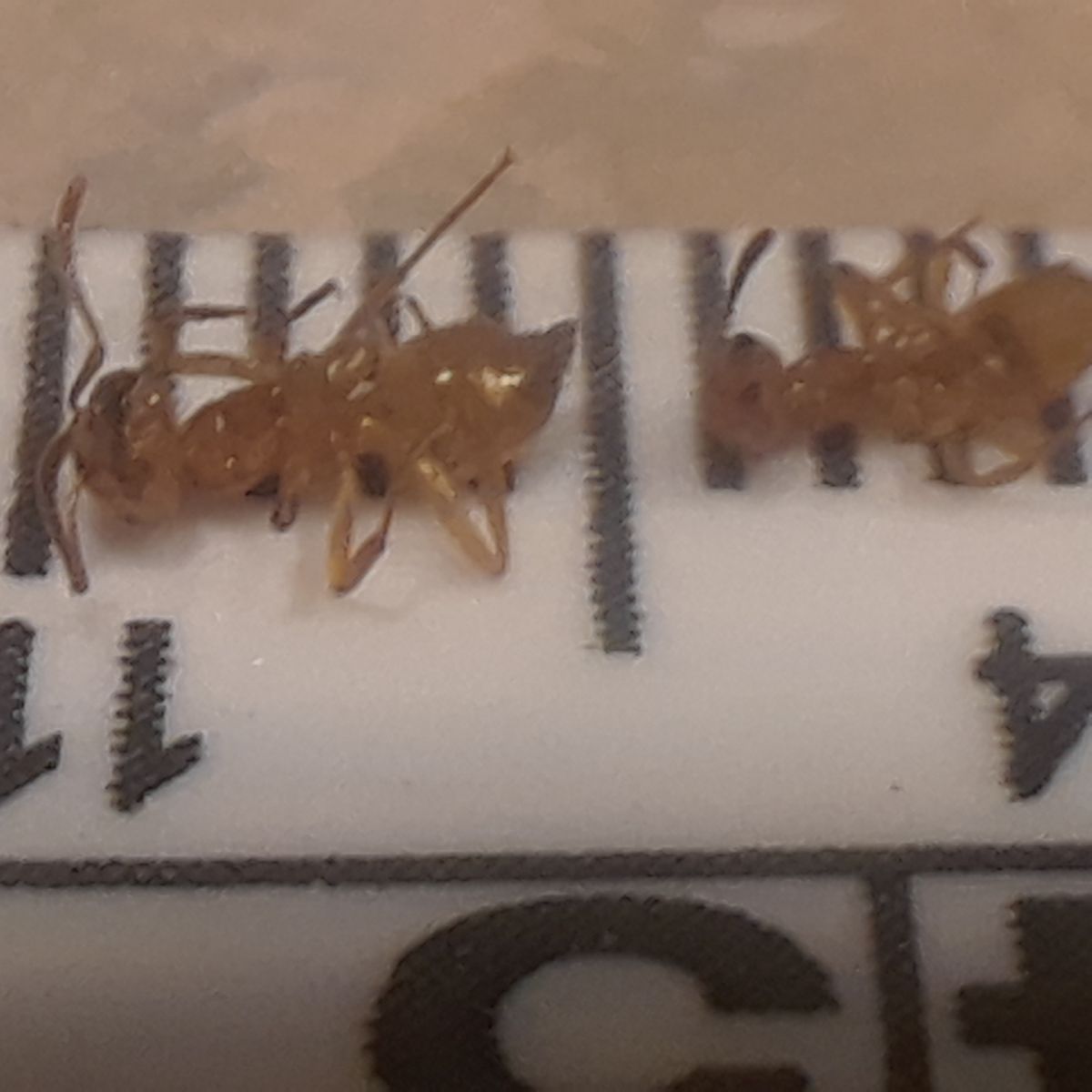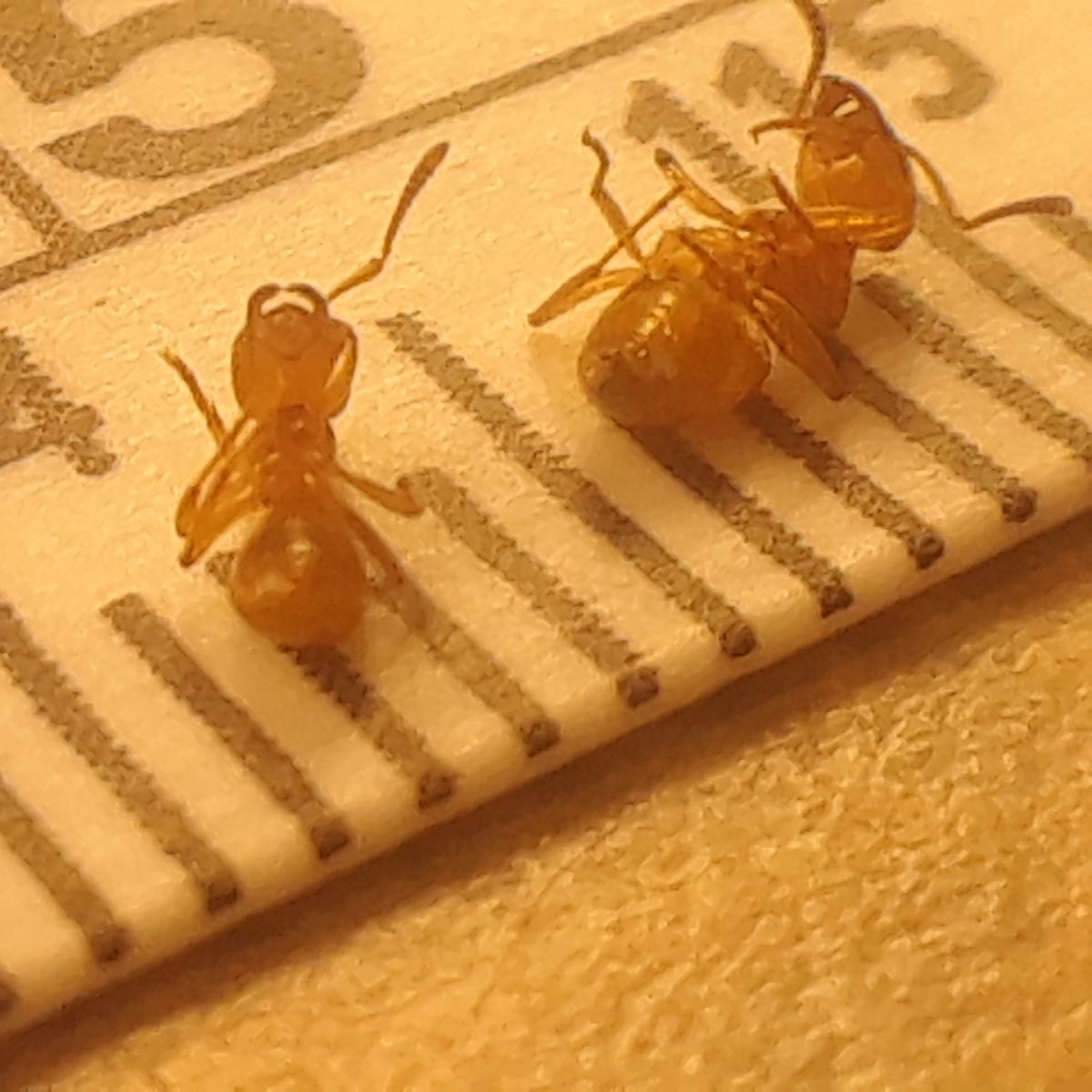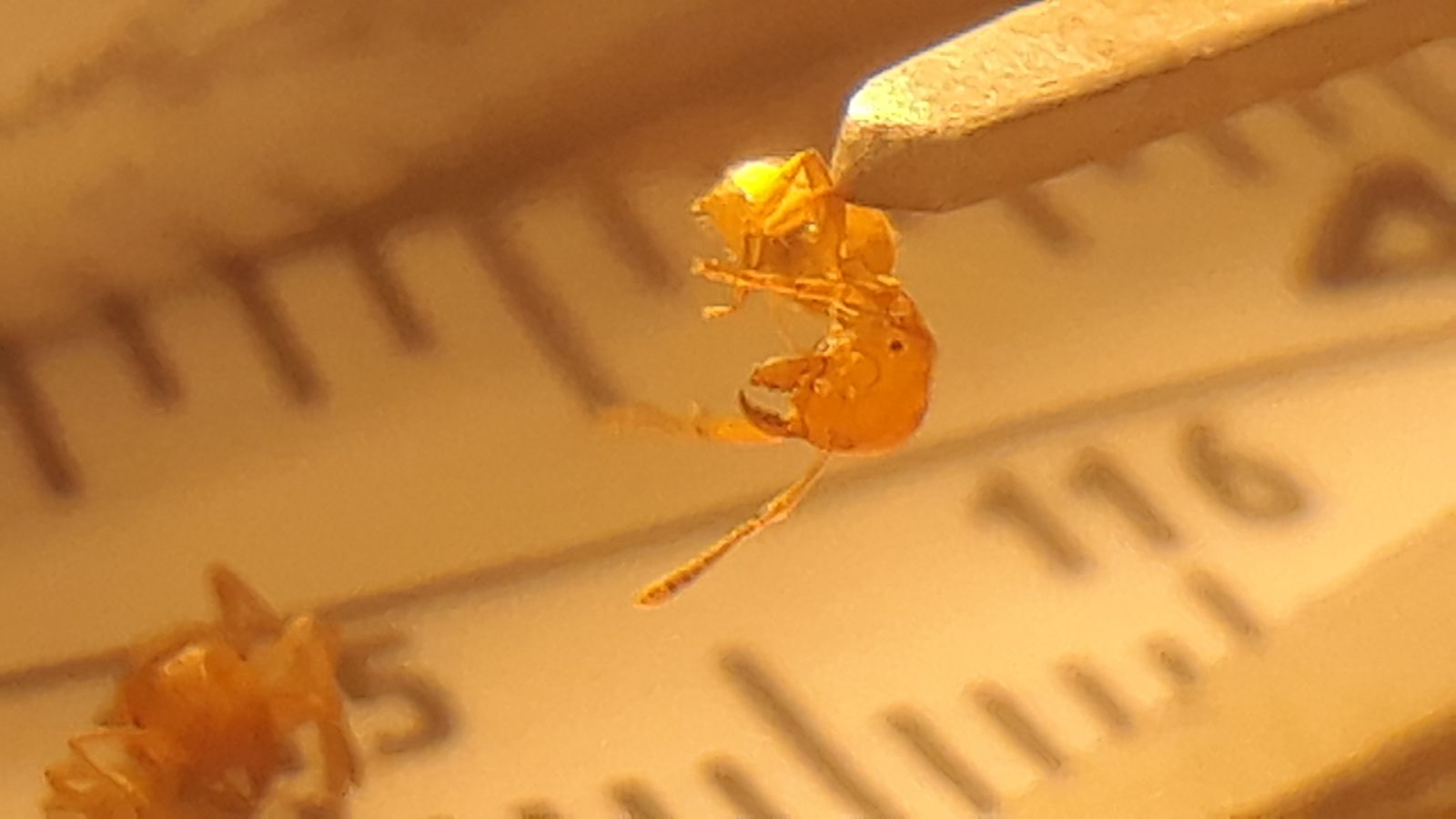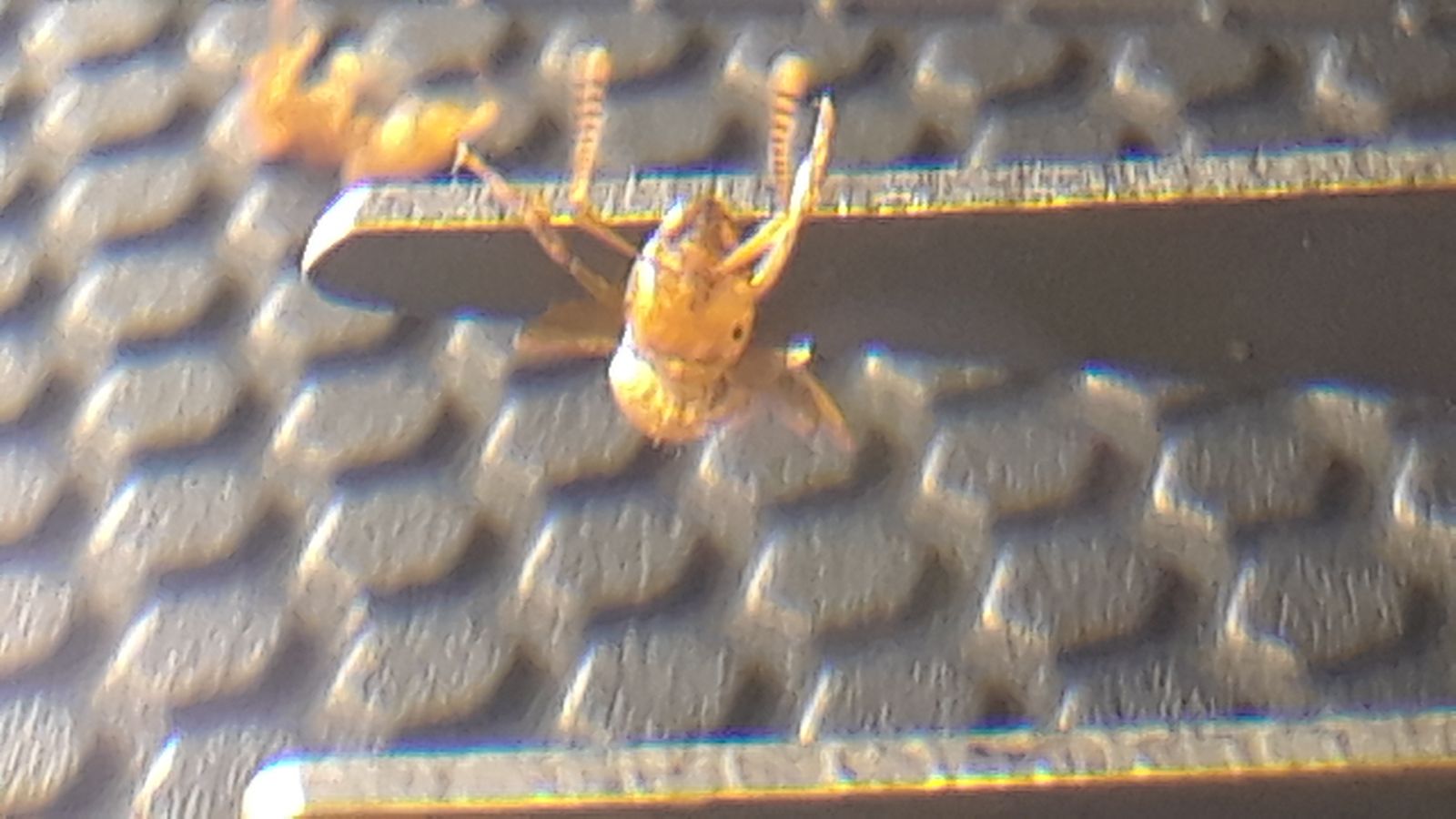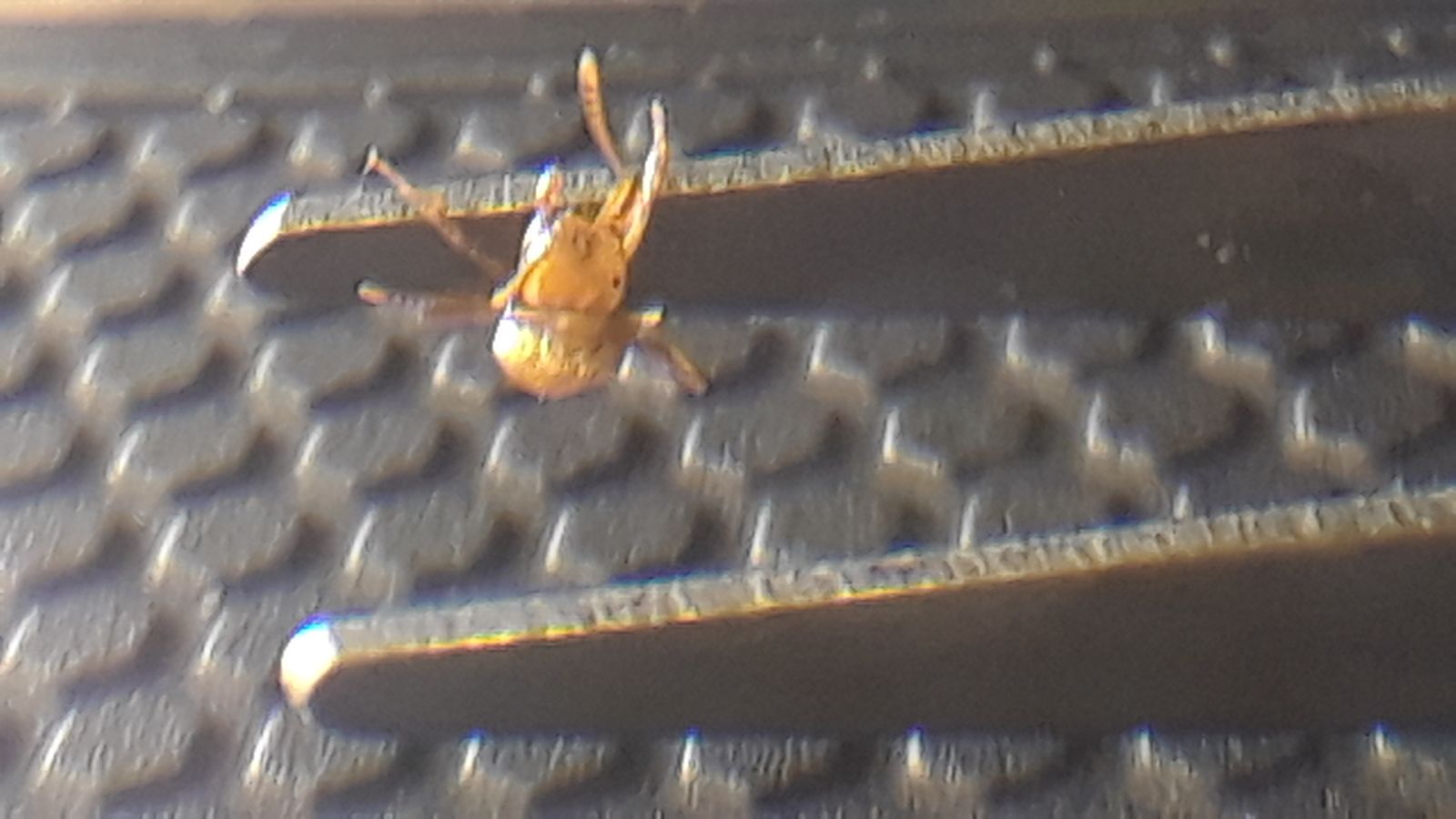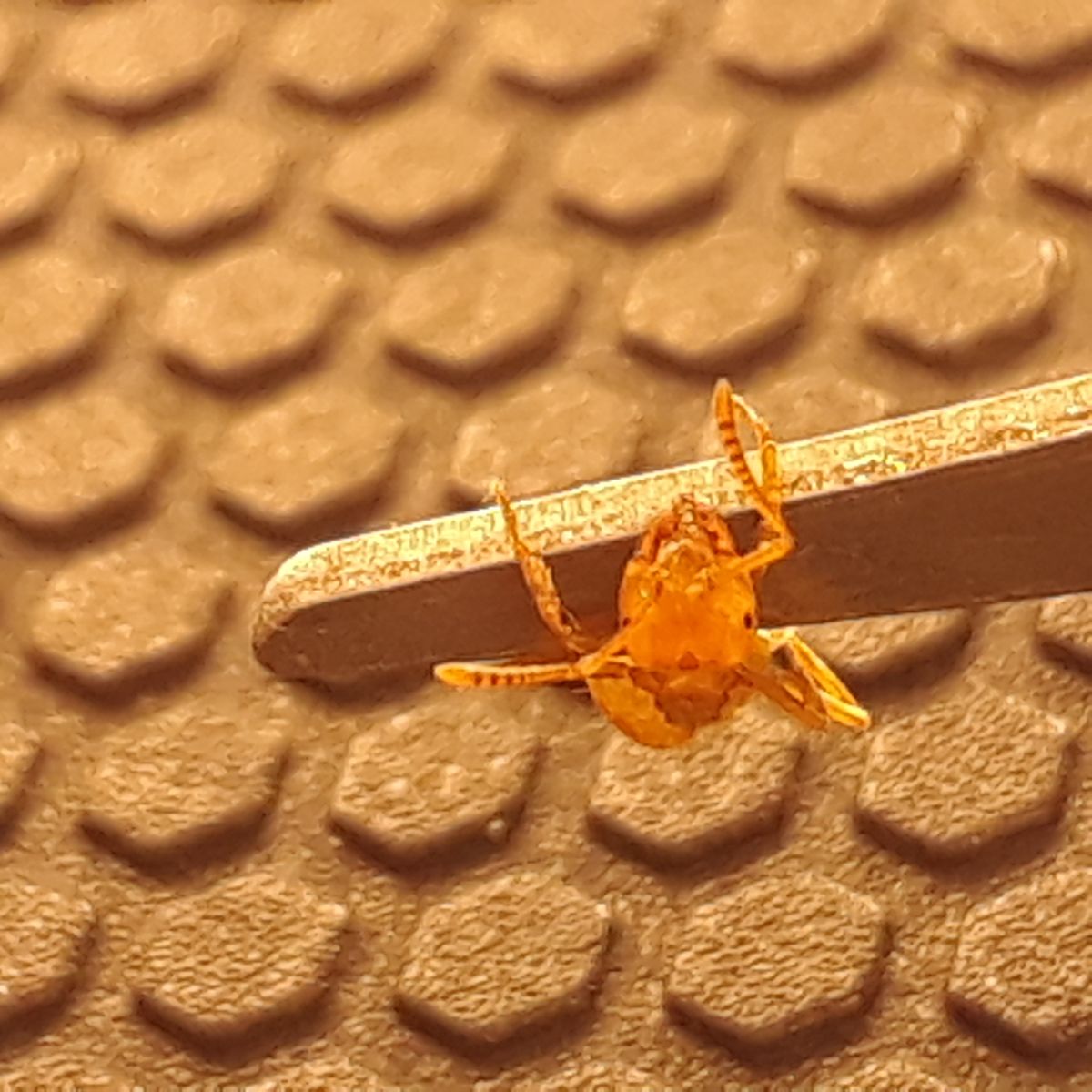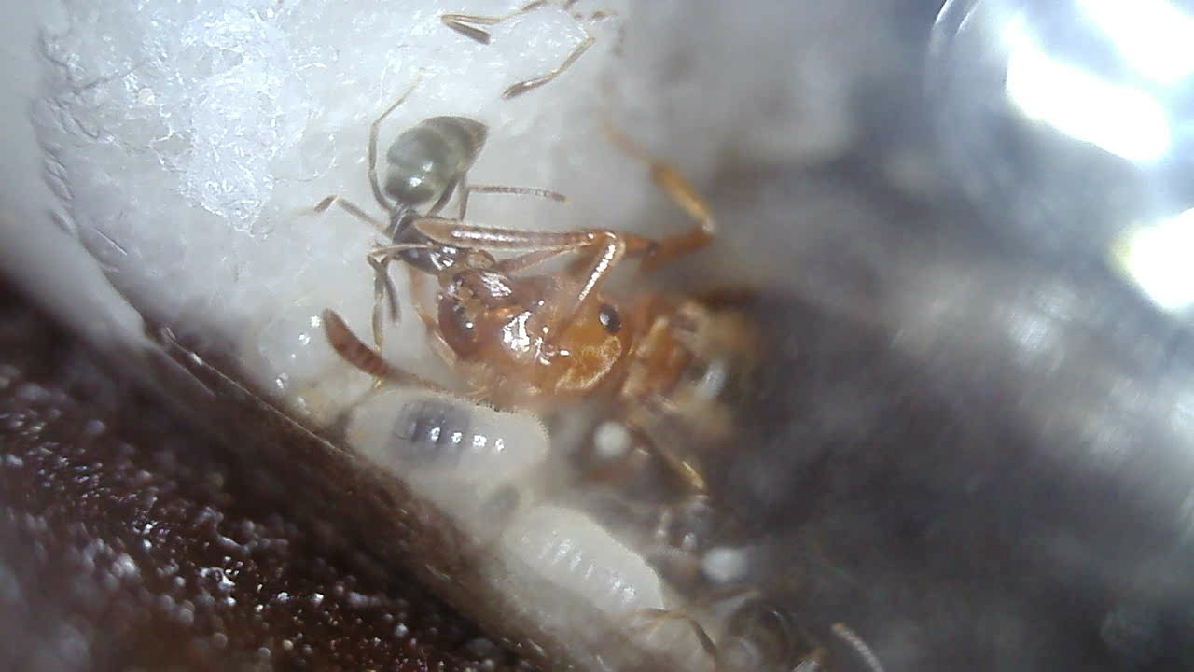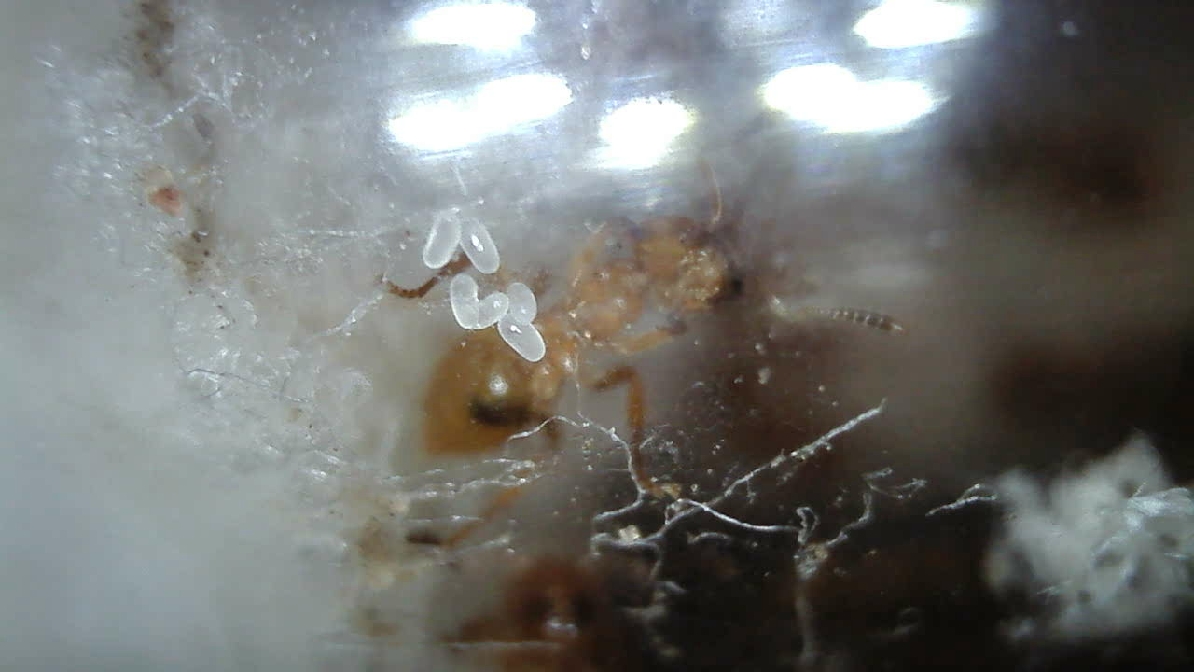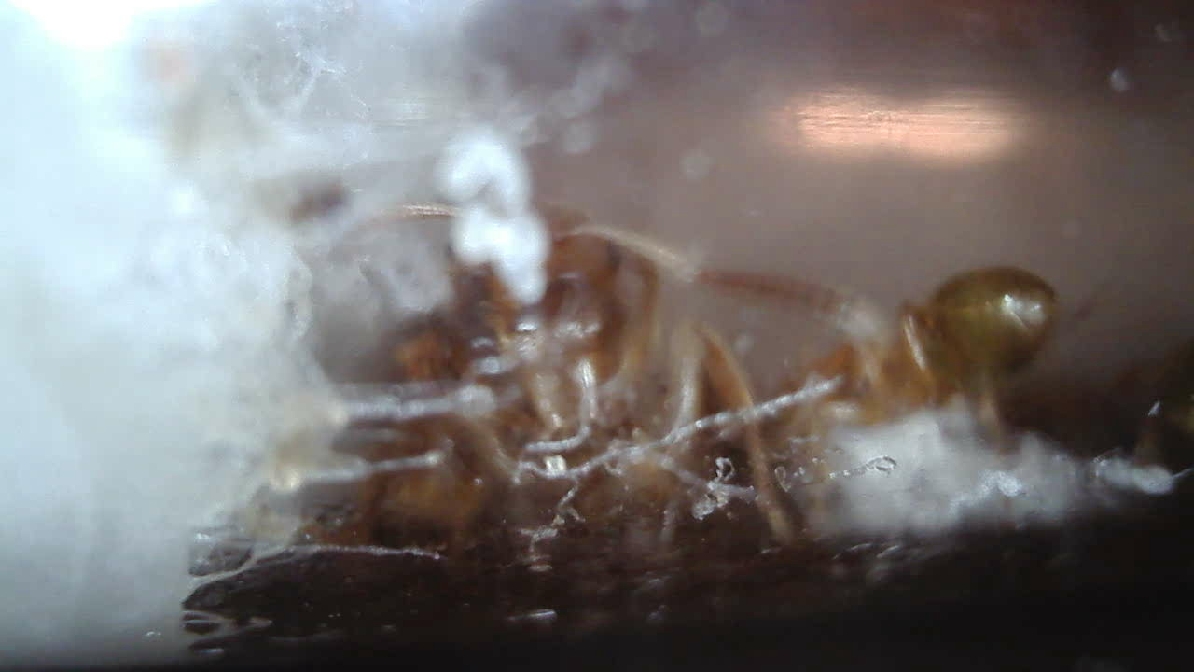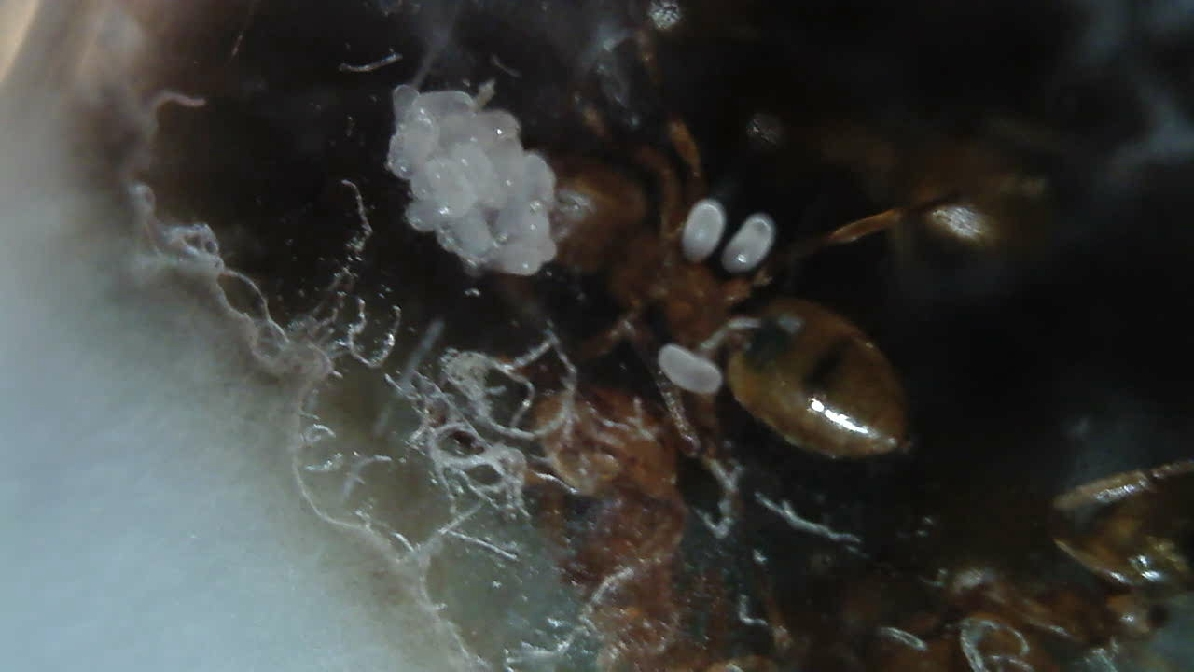Anyways, since there's not a lot or available information on these ants, I've decided to experiment a bit. I caught wild L. Neoniger adult workers, about 20 from the same colony, and split them between 2 L. Interjectus queens. There doesn't seem to be any complications at this point. In fact, these are two of the three test tubes that I didn't have to keep subdued in the refrigerator.
I took two more of my own L. Neoniger colonies, small colonies from queens found last fall, and removed the queens and a couple workers to tend them and put them back into different tubes. I left the majority of the Neoniger workers, larvae and pupae in the old tubes and added a L. Interjectus queen to both. There was a lot of struggling, the Neoniger workers went berserk. I put these two in the fridge and it calmed everyone down rather quickly. I'm going to leave them in there for 24hrs.
Next, I took my aspirator and sucked up about 40-50 (or more) L. Interjectus workers from under a stone a few yards away from where I caught all the queens. In fact, it's possible some of my queens came from this very colony. I'd also like to add that I don't recommend sucking these ants up with an aspirator, I thought I was going to puke, choke to death, or possibly both - it was rough. Anyways, what better ants to tend a L. Interjectus queen and her brood than L. Interjectus workers? It made sense to me, so I gave it a shot. I split these workers into two more test tubes and added one queen to each. These workers also went ballistic and ended up in the fridge as well.
Lastly, I have one more tube with a L. Interjectus queen, 7 of my own Neoniger workers and 6 Neoniger pupae. I didn't have to chill this one, they seem to tolerate each other without any aggression.
That's it so far. I'll keep this updated as frequently as possible. It will likely be slow going, but interesting nonetheless. I'll post pics as soon as things calm down and the host's accept their new master's 😁.
Edit:
I decided to number the queen's to help keep things organized.
Queen #1 & #2 = L. Interjectus host workers
Queen #3 & #4 = Captive reared Neoniger hosts (workers, larvae and pupae) (No eggs).
Queen #5 & #6 (both perished) = Wild caught Neoniger worker hosts (No brood).
Queen #7 = Originally captive reared Neoniger workers and pupae only (queen killed all host workers). Now this same queen is successfully paired with L. Interjectus host workers.
Queen #8 (perished) = Wild caught L. Neoniger workers with a huge pile of male alate pupae. (Queen perished)
Edited by Jamiesname, April 23 2019 - 11:51 AM.









